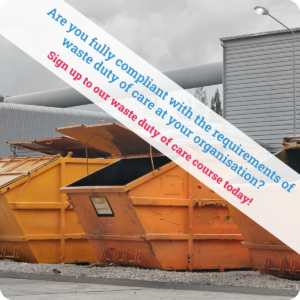The Grenfell Tower disaster on 14th June 2017 provided the catalyst for significant change in building safety regulation across the UK. These changes aim to ensure that this type of catastrophic disaster will never occur again.
The Building Safety Act 2022 instigates the most significant changes to building regulations. The Act predominantly applies to England and Wales, with limited application in Scotland and Northern Ireland.
This article, written by consultant Tom Marsh, outlines the changes, but if you prefer your information in a visual format, look out for Tom’s webinar on changes to the building regulations – available from 21st July 2022.
New ‘Building Safety Regulator’
Changes are made to the way that fire safety is regulated. The newly created ‘Building Safety Regulator’ operates under the Health and Safety Executive (HSE) to ensure the safety of people in or around buildings, and to improve the standard of buildings.
Higher Risk Buildings in England
Duties are introduced in England for ‘higher-risk buildings’ (those of at least 18 metres in height or at least 7 storeys, and containing 2 or more residential units). These buildings must meet specified requirements, including the following.
- Completion certificates must be obtained before they can be occupied by residents.
- An occupied higher-risk building must be registered with the Building Safety Regulator.
- Duties are placed on building owners and others with an obligation to repair the building (referred to as an ‘accountable person’) to assess and manage risks to their buildings.
- There must be a strategy for engagement with residents of the building.
In addition, residents and owners must not interfere with safety items or act in a way that would cause a risk to building safety.
New marketing and supply of construction products regulations for the United Kingdom (UK)
The Secretary of State has power to introduce regulations relating to the marketing and supply of construction products throughout the UK.
Protection for leaseholders
It is made clear that the cost of replacing cladding falls to developers and manufactures, or building owners, and not to leaseholders.
The Fire Safety (England) Regulations 2022 has been introduced to improve fire safety in high-rise and other multi-occupied residential buildings and comes into force on 23rd January 2023. It imposes new duties on a ‘responsible person’ (a person with responsibility for the safety of themselves and others) for the building, including:
- providing a secure information box;
- making building plans available;
- providing information for residents;
- inspections of fire doors, lifts and fire-fighting equipment; and
- maintaining records for external walls and their materials.
The Building (Scotland) Amendment Regulations 2022 (under the ‘Updates’ section of The Building (Scotland) Regulations 2004 on LUS) brings new requirements to improve fire safety in buildings in Scotland. It introduces requirements to address external wall cladding systems that use high risk materials; requires work to external wall cladding to go ahead only with a building warrant; and work must be done to the mandatory standard.
The Building etc. (Amendment) (England) Regulations 2022 (under the ‘Updates’ section of The Building Regulations 2010 on LUS) expands the list of combustible materials banned from use on the external walls of buildings. Additionally, it brings hotels, hostels, and boarding houses within the scope of the combustible materials ban. These Regulations come into force on 1st December 2022.
The Act and the Regulations above are the first to be published and mark the beginning of a wider revolution in UK building safety law. Further legislation is to be expected. The best way to keep updated is to be subscribed to our Legislation Update Service.
